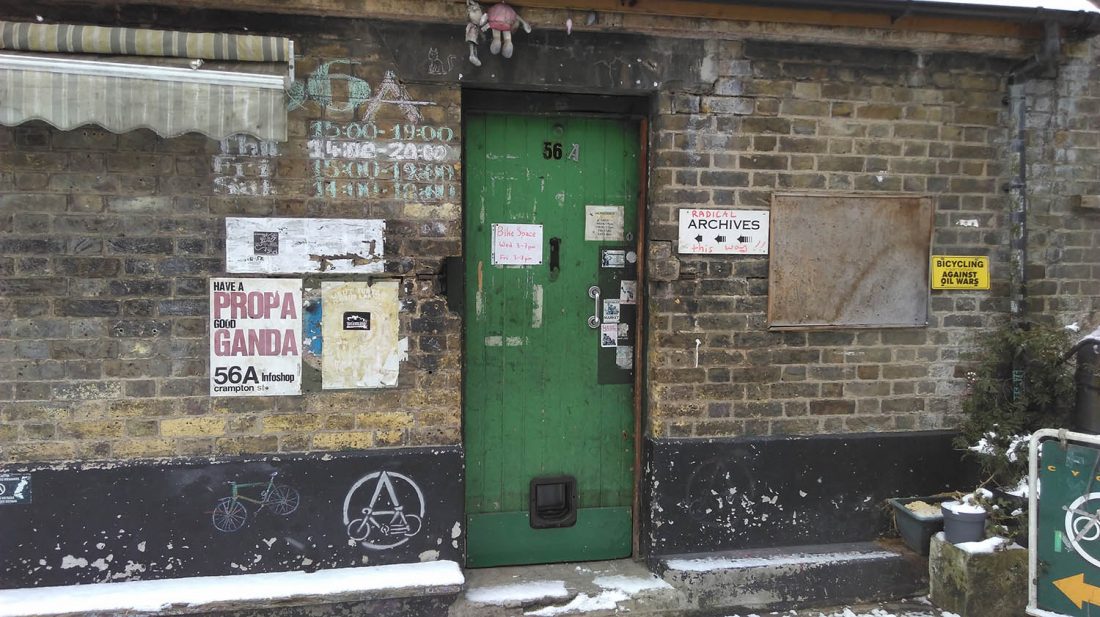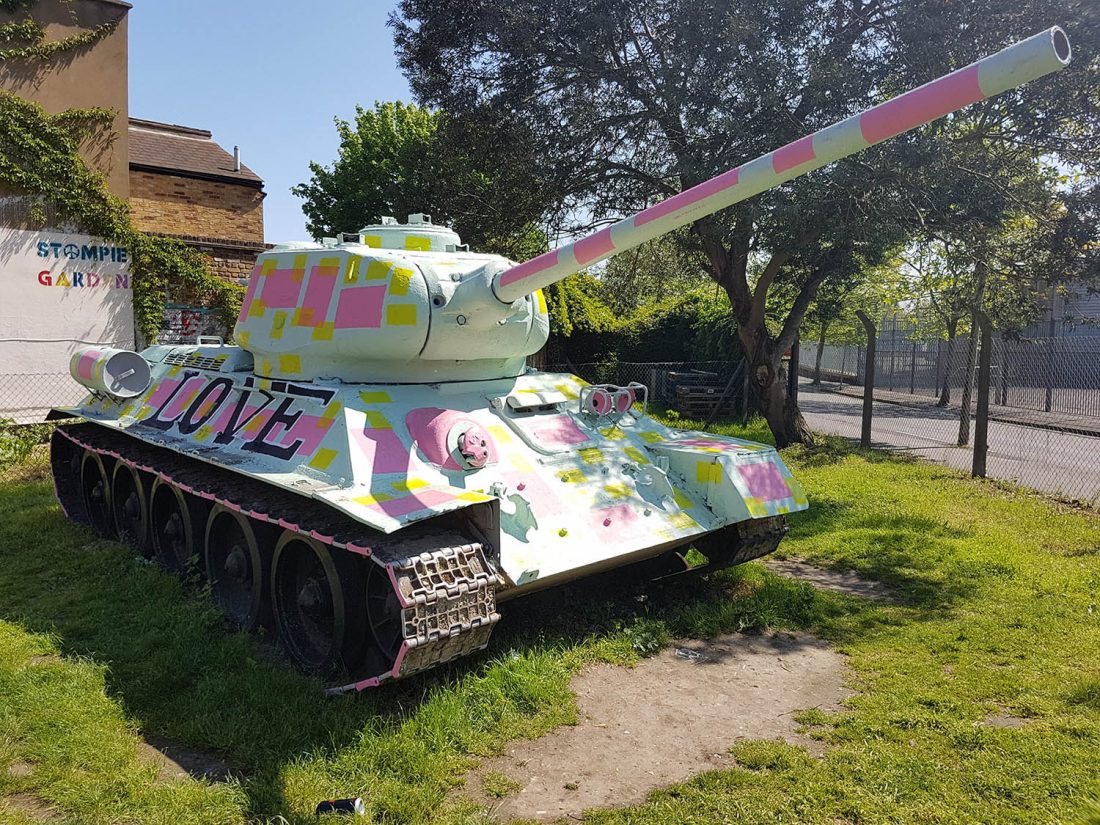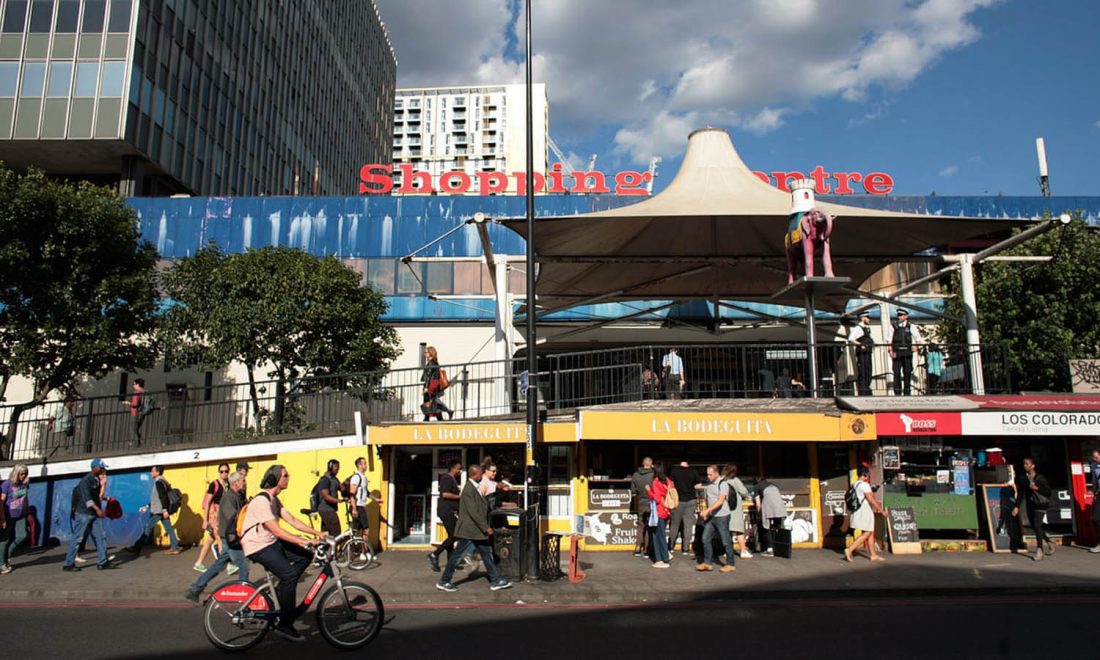
SLG Archive Interactive Map. Photo: Andy Stagg
Launched in September 2018, the SLG interactive local heritage map now has over 100 places documented, charting the social and cultural history of the area from the 1860s to the present day! Archivist Lucy Inglis introduces some of the most popular additions of the last six months, and invites visitors to visit the Archive room in the Fire Station to discover other entries and make their own suggestions for points on the map.
Developing an interactive map which plots the artistic and social histories of Peckham and Camberwell (and possibly further afield) was always central to the SLG’s plan for the Archive room in its new annexe, which opened in September 2018. The original Fire Station opened on Peckham Road in 1867, and the South London Gallery followed suit 100m away in 1891. From then to now, the rich cultural heritage of the local area has continued to grow. The map brings together stories about the places that have contributed to this narrative. Some of these places are not well known, several of them have now disappeared. The map also celebrates an array of notable people who have lived and worked in the area, such as Dr Harold Moody, John Boyega and Muriel Spark.
We want the map to continue to grow and would love to hear your ideas of places to include. There are suggestion slips next to the map in the Archive room at the Fire Station or email us at archive@southlondongallery.org. Alternatively, tweet us @SLG_artupdates.
Here are just some of the brilliant examples of places nominated by members of the public so far:

Entrance to 56a Infoshop
56a Infoshop
56a Infoshop is a radical social centre situated between Elephant and Castle and Walworth. The building is collectively run by Fareshares food co-op and 56a Bikespace. The centre has a large open-access reading and research archive that contains over 50,000 items including magazines, pamphlets, books, posters and leaflets. 56a Infoshop is run by volunteers and sells books and zines to support their activities. The centre is open Wednesday to Saturday and opening times can be found on their website.
Grand Surrey Canal
Construction of the Grand Surrey Canal was approved in 1801. Originally intended to be a much more extensive project, financial issues meant its length was shortened considerably to a mere three-mile route. This stretch of canal from Rotherhithe to Camberwell was completed in 1909, although a branch down to Peckham was added in 1826. The waterway was a hub for industry and an important timber and limestone trading route. Whitten’s Timber, which is still trading today at Eagle Wharf, was one of many timber yards and businesses which had sites along the prosperous canal. It also acted as a centre for local leisure; pubs hired out rowing boats and locals enjoyed picnics by – and swimming in – the canal.
Over time it fell into disuse and during the 1950s and 60s most of its sections were drained and filled in. By the 1970s, timber trading along the route ceased and the space fell derelict. Today the canal remains largely traceable. The former Camberwell basin was incorporated into Burgess Park, and the head of the canal in central Peckham is now occupied by Peckham Square. Whitten Timber, although relocated, still displays black and white photographs of the canal across the decades. Guided walking tours along the canal can be taken from Peckham to Rotherhithe.

Stompie Garden
Stompie Garden
Stompie Garden is an area of scrubland off the Old Kent Road where an old T-34 Tank was placed in 1995. It was initially brought to London as part of the set for the filming of Richard III in 1995, starring Ian McKellen. The tank is thought to have originally been used in the Czech Republic during the Prague Spring in 1968. A private developer who owns the land bought the tank and installed it on the plot after their building proposal was rejected by the local council. Although the council tried to remove the vehicle, the landlord had already been given planning permission to park vehicles on the land. More recently, the tank has been used by graffiti artists for political messages.

Elephant and Castle shopping centre
Elephant and Castle Shopping Centre
According to its 1963 sales brochure, the Elephant and Castle Shopping Centre represented ‘an entirely new approach to retailing, setting standards for the sixties that will revolutionise shopping concepts throughout Britain.’ Chosen to design this ambitious project were husband and wife partnership Paul Boissevain and Barbara Osmond (Ernö Goldfinger was among the 35 unsuccessful entries). Their winning proposal was based upon an American-style fully enclosed mall, a type of building not seen at that time in Europe. There were more than 100 shops over the three levels, with an office block above. Outside was a landscaped piazza and direct access to the railway and tube entrances.
After opening in 1965, the centre continued to flourish. A thriving community of largely independent traders has continued to occupy the mall and its ‘moat’ outside. The Guyanese, Nigerian, Thai, Columbian, Ecuadorean, Indian, Jamaican, Peruvian, Venezuelan and Dominican food on offer reflects the rich ethnic mix of the neighbourhood. Despite some criticism of the architectural design over the years, it has remained incredibly popular with the public, especially the Superbowl and Palace Bingo on the top floor.
A 2018 application to Historic England to add the centre to the national heritage list was rejected on the grounds that ‘although the shopping centre originally had architectural interest due to the quality of its design, this has been eroded by a series of incremental changes over the years so that it does not resemble its original appearance.’ Plans to demolish the shopping centre in 2019 were formally approved by London mayor Sadiq Khan in December 2018.
Lava Skating Rink
The rink, which opened on Grove Lane opposite Denmark Hill Station in 1876, was given its name because the floor was apparently covered with a layer of lava from Mount Vesuvius in Italy.
An early example of a purpose-built roller-skating rink, the first game of roller hockey in England was played there in 1885. The game’s popularity with the locals meant that several matches were played there, always to full audiences.
On the outbreak of war in 1914 the rink was converted into a military depot. A fire in around 1920, during which the building was destroyed, prevented it from re-opening.